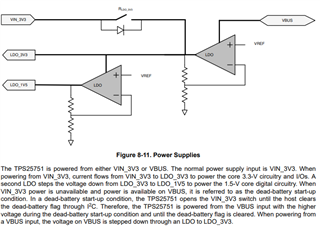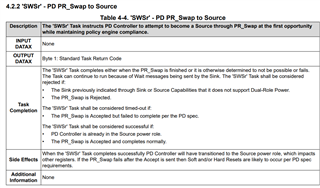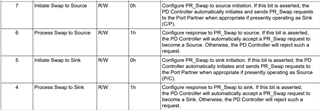Other Parts Discussed in Thread: BQ25798, , BQ25792
Tool/software:
Hi,
I have TPS25751S combined with BQ25798, 2s, safe mode, both ADCINx = 0, sleep mode on. There is also a controller, but it does not touch the system at the moment. Everything works so far, if battery voltage is above 5V (e.g. USB voltage 12V and current of 2A --> battery charge current or 3A). If I use a PD-mains charger and the battery is below 5V sometimes it starts charging, especially after power down and on. But sometimes not. In some cases permanent 5V is visible at the USB-C input with no charge current, sometines 5V pulses with some ms duration after some 200ms pause is visible. The VIN_3V3 is about 2.7V, also the LDO_3V3 (it should be powered from VBUS in that case and be at 3.3V?). The LDO_1V5 is o.k. There is 5V at the VBUS, but not at the PPEXT after the transistor switch (BQ VBUS). Sometimes I saw also correct voltage at the LDO_3V3 and the charging does work either.
In the data sheet BQ I saw a lower batttery limit of 5V. Does it mean dead battery charging does not work below 5V?
Best reagrds
Karl




